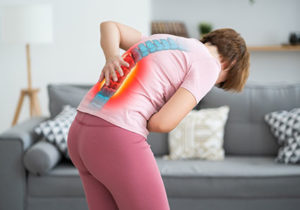3 Things You Didn’t Know About Scoliosis
Scoliosis has been documented and studied for centuries. Due to the many variables affecting scoliosis, it has been difficult to determine the effect of conservative treatment on this condition. Recently, however, some new studies are showing good results with current treatment techniques and strategies such as bracing, Scoliosis Specific Exercise, and some new and emerging surgical techniques.

Here are 3 things you may not know about scoliosis:
- This condition affects 2-3% of the population, which is an estimated 7 million people in the United States. It is the most common orthopedic problem related to the spine in children. Chances are, someone you know has scoliosis, although they might not have any symptoms associated with it.Scoliosis is 4 times more common in girls than boys, and is usually diagnosed between the age of 10 and 15. Curves are measured in degrees, with anything above 10 degrees considered scoliosis. Once a curve increases to 20-25 degrees, the child is a candidate for bracing, with curves 45-50 degrees and above eligible for surgery.
- Despite significant study and awareness of scoliosis, 85% of cases are still considered idiopathic, or with no known cause. The other 15% are usually due to congenital defects present at birth or neurological problems causing muscle imbalances which result in spinal curves.Current research is showing a genetic component to the condition, but it is also believed to have many other factors. It is believed that scoliosis is a structural problem in the spine where the vertebrae grow abnormally, causing the associated muscle imbalance and progression of the curve. It is also difficult to predict which children will have a progression of the curve. The younger the person is at onset, and the larger the curve is at diagnosis, indicates an increased risk of progression, however.
- Scoliosis is a 3 dimensional deformity. When most people think of scoliosis, they think of the S shaped curve of the back when looking at someone from behind. This curve, when looking at the spine from behind, is definitely a component of scoliosis, but there is also a significant rotation to the spine, which actually is what makes the curve more noticeable.As the spine curves from right to left, the structure of the spine causes the vertebrae to rotate. In the upper back, this causes the ribs on the convex side of the curve to rotate back and the ribs on the concave side to rotate forward, resulting in a rib hump on the convex side of the curve. Usually, when Scoliosis is diagnosed, the doctor, or person performing the screen, will have the person bend forward in a position called the Adams test position. The presence or absence of the rib hump is used to make a preliminary diagnosis of scoliosis.This 3 dimensional aspect of scoliosis is why it is important to treat the scoliotic spine from all 3 dimensions, rather than the 2 dimensional way of looking just from the back. The Schroth Method of treatment is one that addresses all three dimensions of the curve.
There are many more interesting things associated with scoliosis, some of which complicate treatment but many of which make it one of my favorite conditions to treat. Each scoliosis patient I see is different and they are all puzzles that take significant time and effort to develop care plans specific to their curve. If you have questions about scoliosis, or how I address the problems associated with it, please send me an email at david@utahphysicaltherapy.com.
David D. Butler
Owner, Clinic Director
Utah Physical Therapy – Lehi
230 N 1200 E ste 103
Lehi, UT 84043
